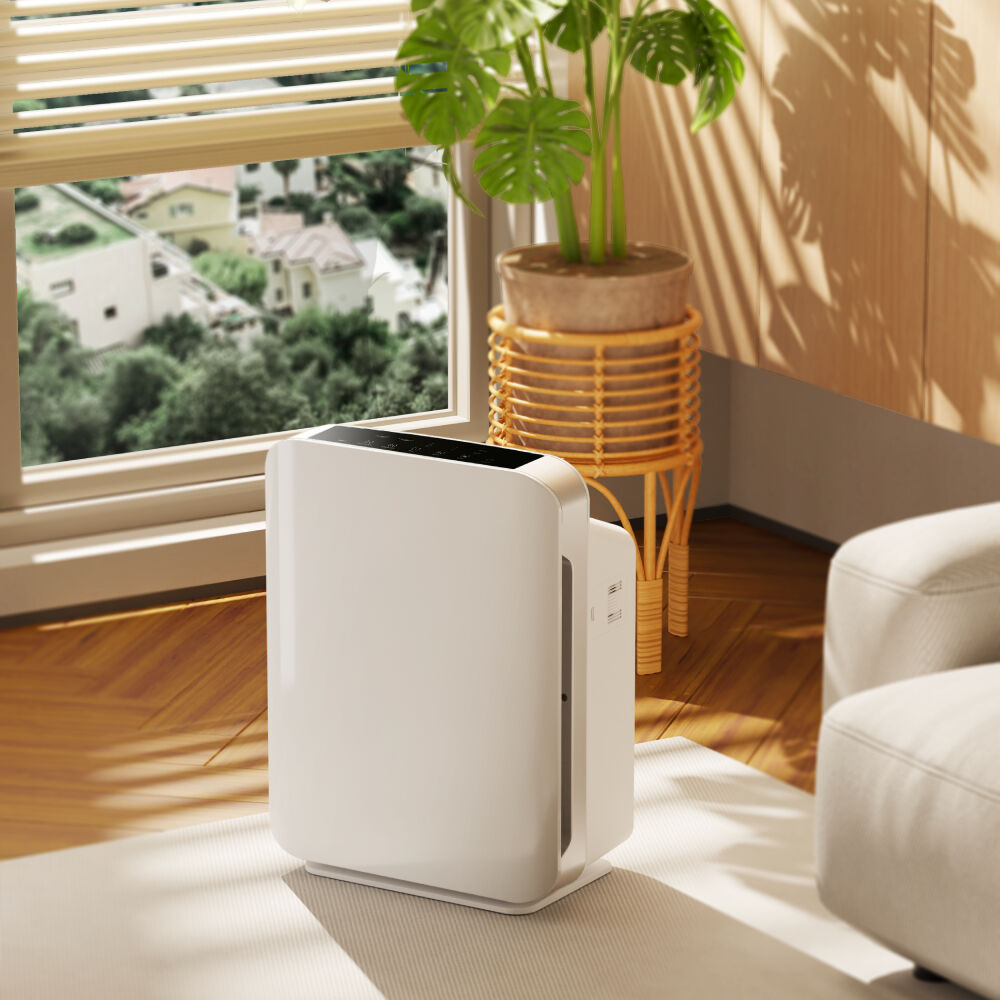How Can a Home Air Purifier Improve Indoor Air Quality Effectively?
Understanding the Impact of Air Purification on Your Indoor Environment
Indoor air quality has become an increasingly critical concern for homeowners, especially as we spend more time inside our living spaces. A home air purifier serves as a powerful solution to combat indoor air pollution, offering a systematic approach to cleaning and refreshing the air we breathe. These sophisticated devices work tirelessly to remove various contaminants, from microscopic dust particles to harmful airborne pathogens, creating a healthier living environment for you and your family.
The significance of clean indoor air cannot be overstated, particularly when considering that indoor air can be up to five times more polluted than outdoor air. This reality has led to a surge in the adoption of home air purifiers as an essential component of modern healthy living. By understanding how these devices function and their benefits, you can make informed decisions about improving your home's air quality.
Core Technologies Behind Modern Air Purification
HEPA Filtration Systems
High-Efficiency Particulate Air (HEPA) filtration stands as the gold standard in air purification technology. A genuine HEPA filter can capture an impressive 99.97% of particles as small as 0.3 microns, including dust mites, pollen, and pet dander. When selecting a home air purifier, ensuring it features true HEPA filtration can make a substantial difference in its effectiveness.
The intricate mesh of fibers in HEPA filters works through multiple mechanisms, including interception, impaction, and diffusion. This comprehensive approach ensures that even the smallest particles are trapped, preventing them from recirculating in your home's air. Regular maintenance and filter replacement maintain optimal performance and ensure consistent air quality improvement.
Activated Carbon Technology
While HEPA filters excel at capturing particles, activated carbon technology addresses another crucial aspect of air quality: chemical pollutants and odors. Through a process called adsorption, activated carbon filters in a home air purifier trap volatile organic compounds (VOCs), cooking smells, and other gaseous pollutants that might otherwise escape particle filtration.
The highly porous nature of activated carbon provides an enormous surface area for capturing these airborne chemicals. This makes it particularly effective in kitchens, where cooking odors are common, or in newly furnished rooms where off-gassing from furniture and carpets may occur.

Maximizing Air Purifier Performance in Your Home
Strategic Placement for Optimal Results
The effectiveness of your home air purifier largely depends on its placement within your living space. Positioning the unit in high-traffic areas or rooms where you spend the most time ensures maximum benefit. Consider placing air purifiers in bedrooms, living rooms, or home offices where air quality impacts daily activities most significantly.
Avoid placing the unit in corners or behind furniture, as this can restrict airflow and reduce efficiency. Instead, position your home air purifier at least a foot away from walls and obstacles, allowing it to draw in air from all directions effectively. For multi-story homes, having units on each level ensures comprehensive coverage.
Maintenance and Filter Care
Regular maintenance is crucial for maintaining the effectiveness of your home air purifier. This includes timely filter replacements, cleaning pre-filters, and ensuring the unit's intake and output vents remain unobstructed. Most manufacturers provide specific guidelines for maintenance schedules, typically recommending filter changes every 6-12 months depending on usage and air quality conditions.
Monitoring filter status through built-in indicators or regular inspection helps maintain optimal performance. Some advanced models even feature smart sensors that alert you when maintenance is needed, taking the guesswork out of filter care.
Health Benefits and Indoor Air Quality Improvements
Respiratory Health Enhancement
Using a home air purifier can significantly impact respiratory health by removing airborne triggers that cause allergies and asthma symptoms. The reduction in dust, pollen, and other respiratory irritants creates an environment where breathing becomes easier and more comfortable. This is particularly beneficial for individuals with chronic respiratory conditions or seasonal allergies.
Regular use of air purifiers has been associated with decreased instances of respiratory infections and improved sleep quality. By maintaining cleaner air throughout the night, these devices help ensure more restful sleep and better overall health outcomes.
Protection Against Airborne Pathogens
Modern home air purifiers equipped with advanced filtration systems can help reduce the concentration of airborne pathogens, including certain viruses and bacteria. While no air purifier can completely eliminate the risk of infection, having this additional layer of protection contributes to a healthier indoor environment.
The combination of HEPA filtration and other purification technologies works continuously to reduce the overall pathogen load in your home's air. This becomes especially valuable during peak illness seasons or when family members are recovering from respiratory infections.
Smart Features and Modern Innovations
Air Quality Monitoring Systems
Contemporary home air purifier models often include sophisticated air quality monitoring capabilities. These systems use advanced sensors to detect various pollutants, providing real-time feedback on your indoor air quality. This information helps users understand when purification is most needed and allows for automated adjustments to maintain optimal air quality.
Many units display air quality information through easy-to-understand color codes or numerical values, making it simple to track improvements over time. This feedback helps validate the effectiveness of your air purification efforts and can guide decisions about when to increase purification intensity.
Connected Home Integration
The integration of smart home features has revolutionized how we interact with air purifiers. Modern units can connect to home WiFi networks, allowing remote control through smartphone apps. This connectivity enables users to monitor air quality, adjust settings, and receive maintenance alerts from anywhere.
Smart scheduling features allow you to program your home air purifier to operate at specific times or in response to certain conditions. This automation ensures optimal air quality while maximizing energy efficiency and filter life.
Frequently Asked Questions
How long should I run my air purifier each day?
For optimal results, running your home air purifier continuously is recommended. However, if continuous operation isn't practical, operating the unit for at least 12 hours daily, particularly during sleep hours or when the space is occupied, can still provide significant benefits. Many units have auto modes that adjust operation based on air quality needs.
What room size can a typical air purifier handle?
The coverage area of a home air purifier depends on its Clean Air Delivery Rate (CADR) and the unit's specifications. Most residential units are designed for rooms between 200-400 square feet, though larger models can handle spaces up to 1,000 square feet or more. Always check the manufacturer's recommended room size when selecting a unit.
How often should filters be replaced?
Filter replacement frequency varies by model and usage conditions. Generally, HEPA filters should be replaced every 6-12 months, while activated carbon filters might need replacement every 3-6 months. Pre-filters typically require cleaning or replacement every 2-3 months. Regular maintenance ensures optimal performance and air quality improvement.

 EN
EN
 AR
AR
 NL
NL
 FR
FR
 DE
DE
 EL
EL
 HI
HI
 IT
IT
 JA
JA
 KO
KO
 PL
PL
 PT
PT
 ES
ES
 ID
ID
 VI
VI
 TH
TH
 TR
TR
 MS
MS
